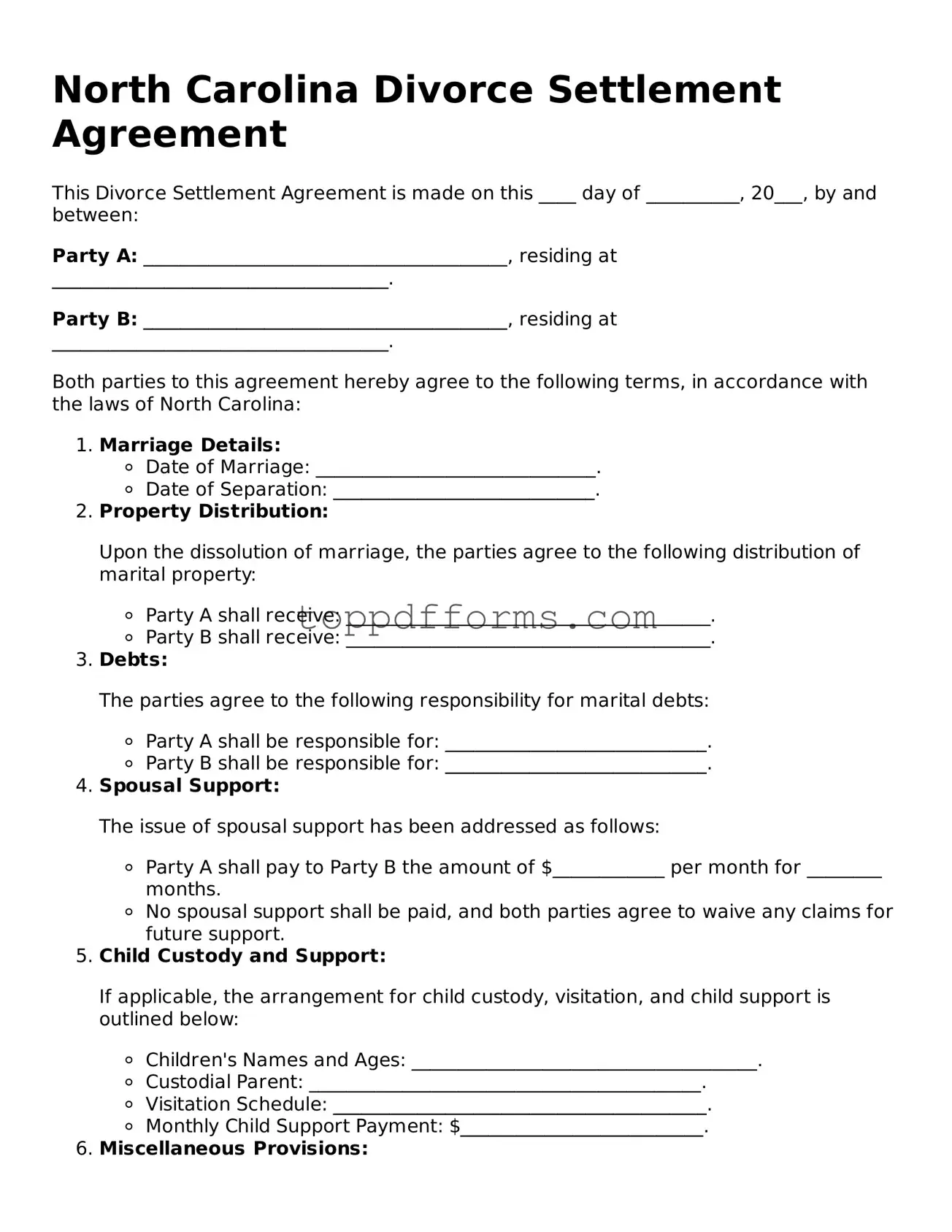What is a North Carolina Divorce Settlement Agreement?
A North Carolina Divorce Settlement Agreement is a legal document that outlines the terms and conditions agreed upon by both spouses during a divorce. This agreement typically covers issues such as the division of property, child custody arrangements, child support, and spousal support. It serves as a binding contract once signed by both parties and approved by the court.
How do I create a Divorce Settlement Agreement in North Carolina?
To create a Divorce Settlement Agreement, both parties should first discuss and negotiate the terms they wish to include. It is advisable to consider involving a mediator or attorney to ensure that all legal aspects are addressed. Once the terms are agreed upon, the document should be drafted, clearly outlining each party's rights and responsibilities. After both parties review and sign the agreement, it must be submitted to the court for approval.
Is a Divorce Settlement Agreement legally binding in North Carolina?
Yes, a Divorce Settlement Agreement is legally binding once it is signed by both parties and approved by the court. This means that both spouses are obligated to adhere to the terms specified in the agreement. If one party fails to comply, the other party can seek enforcement through the court system.
Can I modify my Divorce Settlement Agreement after it is signed?
Yes, modifications to a Divorce Settlement Agreement can be made after it is signed, but both parties must agree to the changes. It is essential to document any modifications in writing and have both parties sign the new agreement. If the changes involve child custody or support, court approval may also be required.
What happens if my spouse does not agree to the Divorce Settlement Agreement?
If one spouse does not agree to the terms of the Divorce Settlement Agreement, the parties may need to negotiate further or seek mediation. If an agreement cannot be reached, the case may proceed to court, where a judge will make decisions regarding the divorce terms. It is crucial for both parties to communicate openly and work towards a mutually acceptable resolution to avoid lengthy court proceedings.
